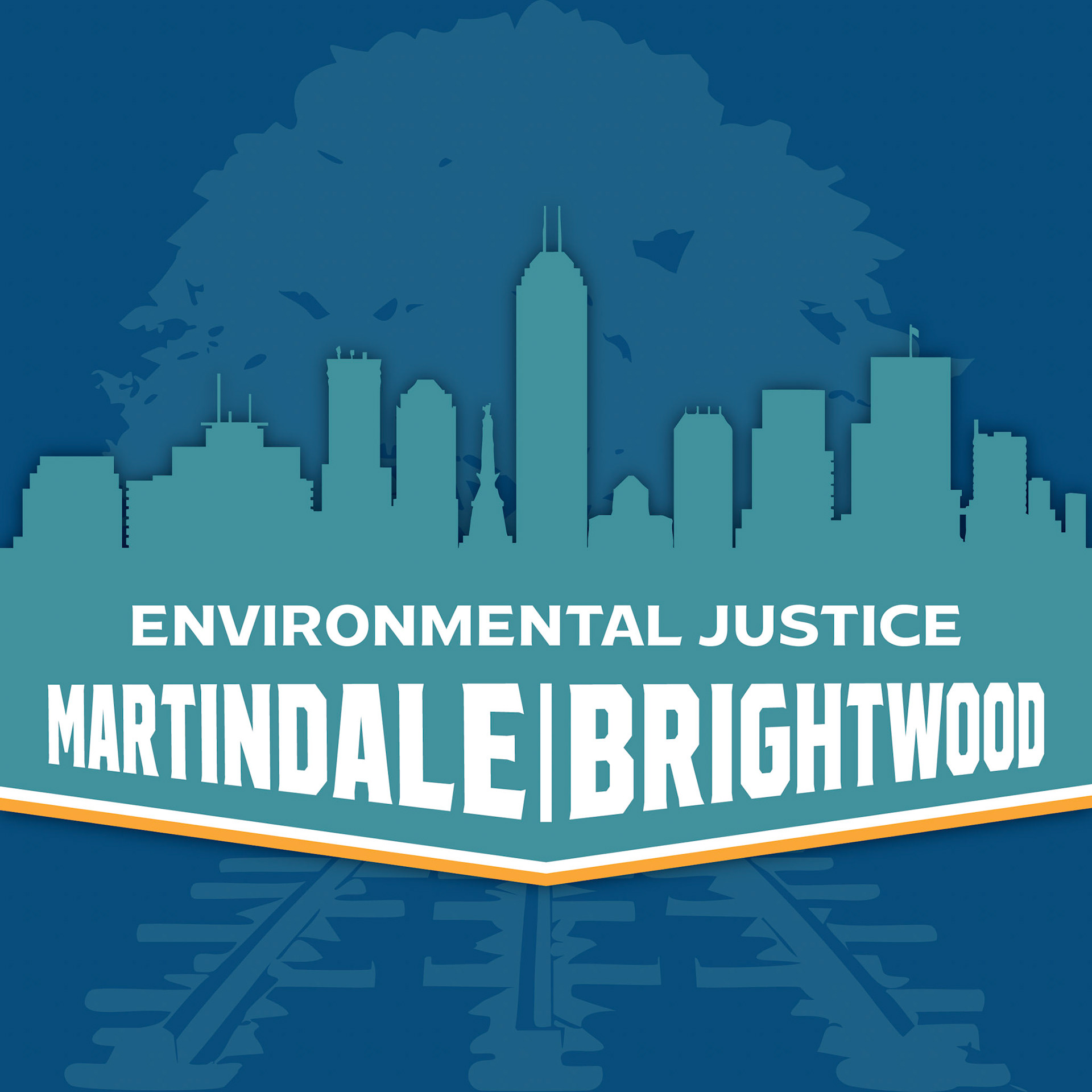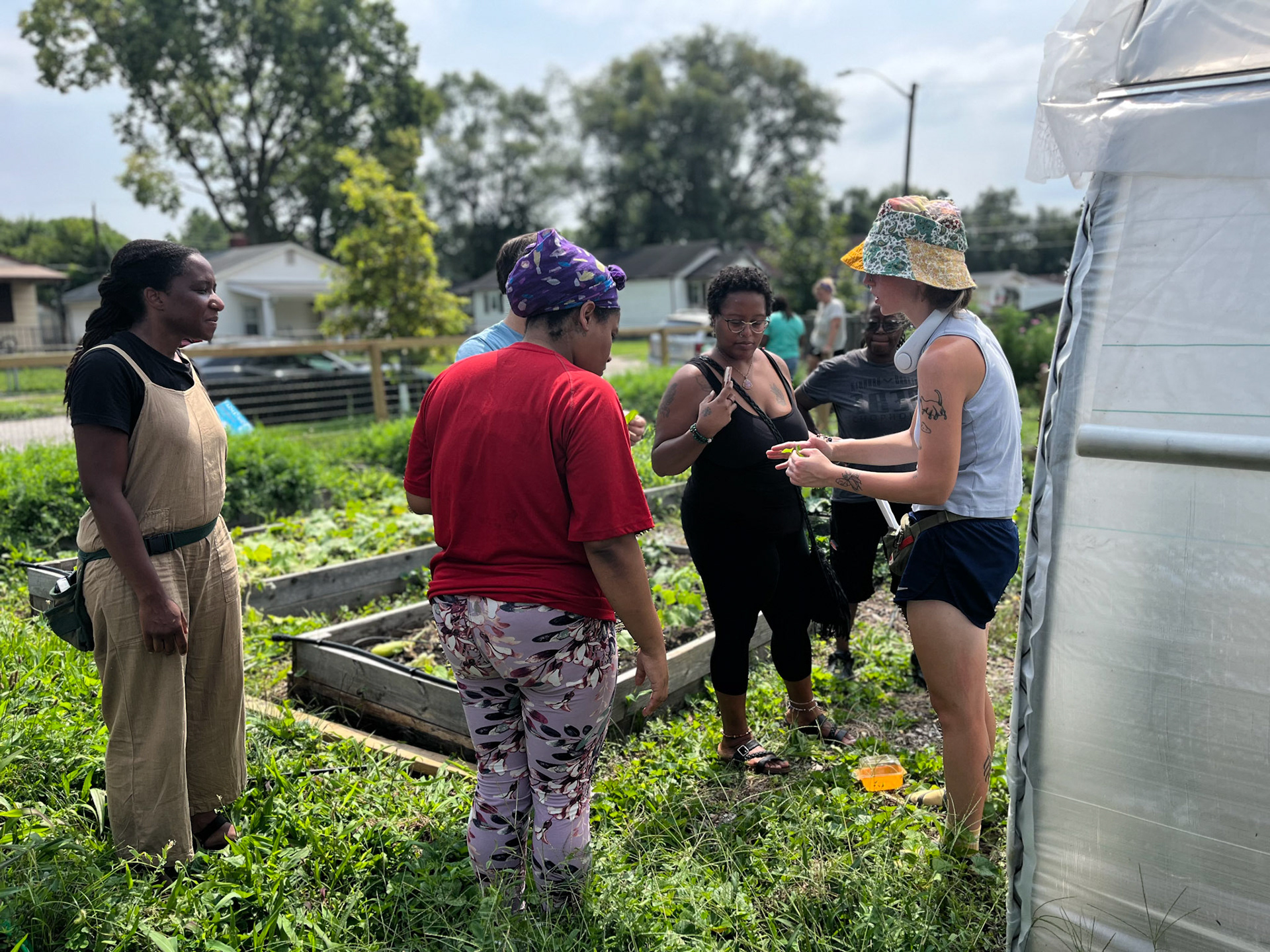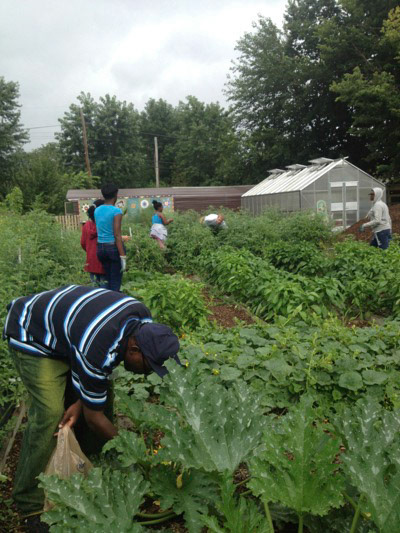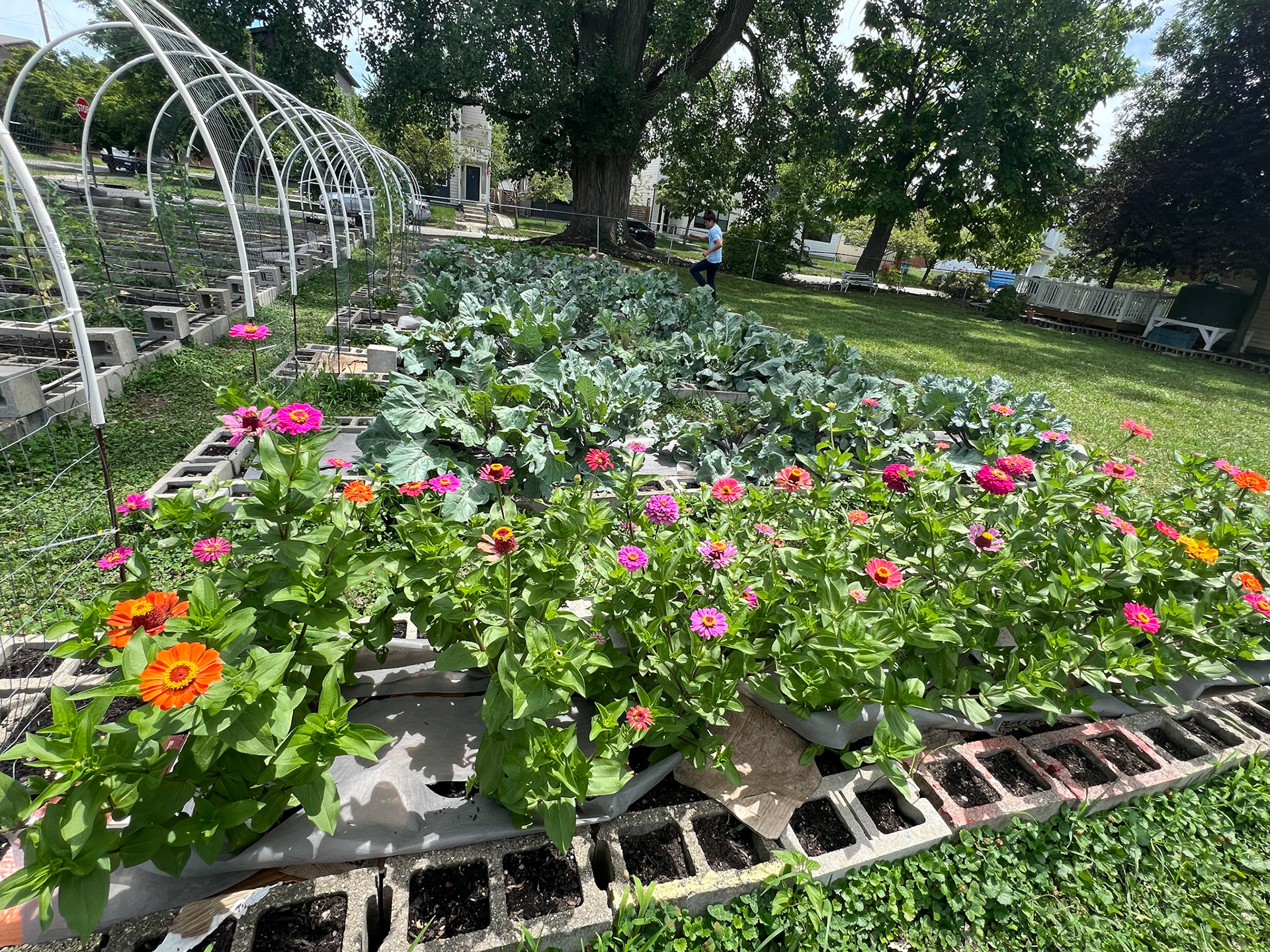Like everyone, the residents of Martindale Brightwood have a right to expect that their homes are free from pollution and their neighborhood provides a healthy place for them and their families to live and raise children. While that has not always been true in Martindale Brightwood, community leaders continue to fight to ensure a cleaner, healthier environment.
When established in the nineteenth century, both Brightwood and Martindale were industrial districts, characterized by an adjacent land use mix of factories and residences. In the twentieth century, neighbors increasingly connected industrial pollution with their health problems from asthma to cancer. Particularly egregious was the operation of a smelter which for twenty years emitted airborne lead contaminants which went into the lungs of neighbors and the soil of neighborhood properties. Later, neighbors also discovered the extent to which dangerous industrial solid waste had been deposited in the ground throughout Martindale Brightwood
Complaints and legal actions by neighbors as early as the 1930s were ignored or rebutted by business and government officials who successfully leveraged racist power structures. But beginning around 2005, neighbors organized the Martindale Brightwood Environmental Justice Collaborative (MBEJC) and enlisted the US Environmental Protection Agency to force the National Lead Company to remediate ground in 225 properties. In 2016, after testing determined that contamination remained in some lots and also discovered more contaminated properties, another wave of remediation served an additional 101 properties.
The MBEJC, working closely with the Martindale Brightwood Code Compliance Committee continues its vigilance to reverse past environmental challenges. But data on lead blood levels in Martindale Brightwood children 5 years and younger shows a decrease in the ten-year period ending in 2021. The fight for environmental justice continues, but there has been progress for the people of Martindale Brightwood.
In this Quality-of-Life Plan, the MBEJC & Code Compliance Committee commit to lead continuing efforts to organize and educate neighbors, mobilizing them to advocate for the community’s environmental interests. The plan also will empower young neighbors in this work, passing the torch to a new generation of Martindale Brightwood neighbors who can address historic inequities and prevent problems with future development.
Leaders will also expand their actions to monitor air quality, particularly auto emissions; to explore cleaner transportation options; and to create more green spaces that filter emissions. Historically, Martindale Brightwood has been a gardening community and reviving that tradition supports food access and self-sufficiency. Developing and implementing new, alternative and renewable energy sources for homes, businesses, and transportation, and also increased energy conservation, will benefit the environment and while reducing economic burden for neighbors.
Water quality will also be a priority and a collaboration begun in 2024 between Martindale Brightwood and Citizens Energy to replace lead service pipe connections between homes and water utility lines promises to further decrease exposure of neighbors to dangerous contaminants in the water they consume.

Goals And Strategies
Goal 1
Governmental, civic, and corporate stakeholders collaborate with Martindale Brightwood and respond accountably to the interest and concerns of residents and youth.
Governmental, civic, and corporate stakeholders collaborate with Martindale Brightwood and respond accountably to the interest and concerns of residents and youth.
Strategy 1.1
Community Advocacy: Organize community meetings and advocacy campaigns to raise awareness about specific environmental issues and demand accountability from government officials and stakeholders.
Community Advocacy: Organize community meetings and advocacy campaigns to raise awareness about specific environmental issues and demand accountability from government officials and stakeholders.
Strategy 1.2
New developments and projects in Martindale Brightwood perform Environmental Impact Assessments prior to development and provide results of those assessments to the community.
New developments and projects in Martindale Brightwood perform Environmental Impact Assessments prior to development and provide results of those assessments to the community.
Goal 2
Empower Martindale Brightwood residents to solve environmental issues with public information, education, and organizing.
Empower Martindale Brightwood residents to solve environmental issues with public information, education, and organizing.
Strategy 2.1
Inform and educate residents about environmental topics, such as pollution, conservation, and sustainability.
Inform and educate residents about environmental topics, such as pollution, conservation, and sustainability.
Strategy 2.2
Empower young residents to become environmental advocates.
Empower young residents to become environmental advocates.
Goal 3
Reduce the burden of energy costs on Martindale Brightwood residents.
Reduce the burden of energy costs on Martindale Brightwood residents.
Strategy 3.1
Collaborate with energy companies and other organizations to provide residents with information and resources to save energy and reduce costs
Collaborate with energy companies and other organizations to provide residents with information and resources to save energy and reduce costs
Strategy 3.2
Homeowners, organizations, and businesses in the community access and benefit from renewable energy sources, such as solar, wind or geothermal.
Homeowners, organizations, and businesses in the community access and benefit from renewable energy sources, such as solar, wind or geothermal.
Goal 4
Implement initiatives to improve air quality in Martindale Brightwood.
Implement initiatives to improve air quality in Martindale Brightwood.
Strategy 4.1
Residents and youth understand the importance of clean air and access real-time data on air quality.
Residents and youth understand the importance of clean air and access real-time data on air quality.
Strategy 4.2
More use of clean transportation options reduces vehicle emissions in the neighborhood.
More use of clean transportation options reduces vehicle emissions in the neighborhood.
Strategy 4.3
Improve air quality and provide natural filtration through expanded green space and more trees
Improve air quality and provide natural filtration through expanded green space and more trees
Goal 5
Ensure access to clean water supply
Ensure access to clean water supply
Strategy 5.1
Citizens Energy replaces lead pipe connections from houses to water mains throughout Martindale Brightwood
Citizens Energy replaces lead pipe connections from houses to water mains throughout Martindale Brightwood
Goal 6
Increase access to healthy and affordable food options within Martindale Brightwood
Increase access to healthy and affordable food options within Martindale Brightwood
Strategy 6.1
Residents grow and consume more locally grown vegetables, fruits and other foods
Residents grow and consume more locally grown vegetables, fruits and other foods
Strategy 6.2
More vendors offer affordable, healthy food options for residents
More vendors offer affordable, healthy food options for residents
Strategy 6.3
Residents make healthier food choices
Residents make healthier food choices


